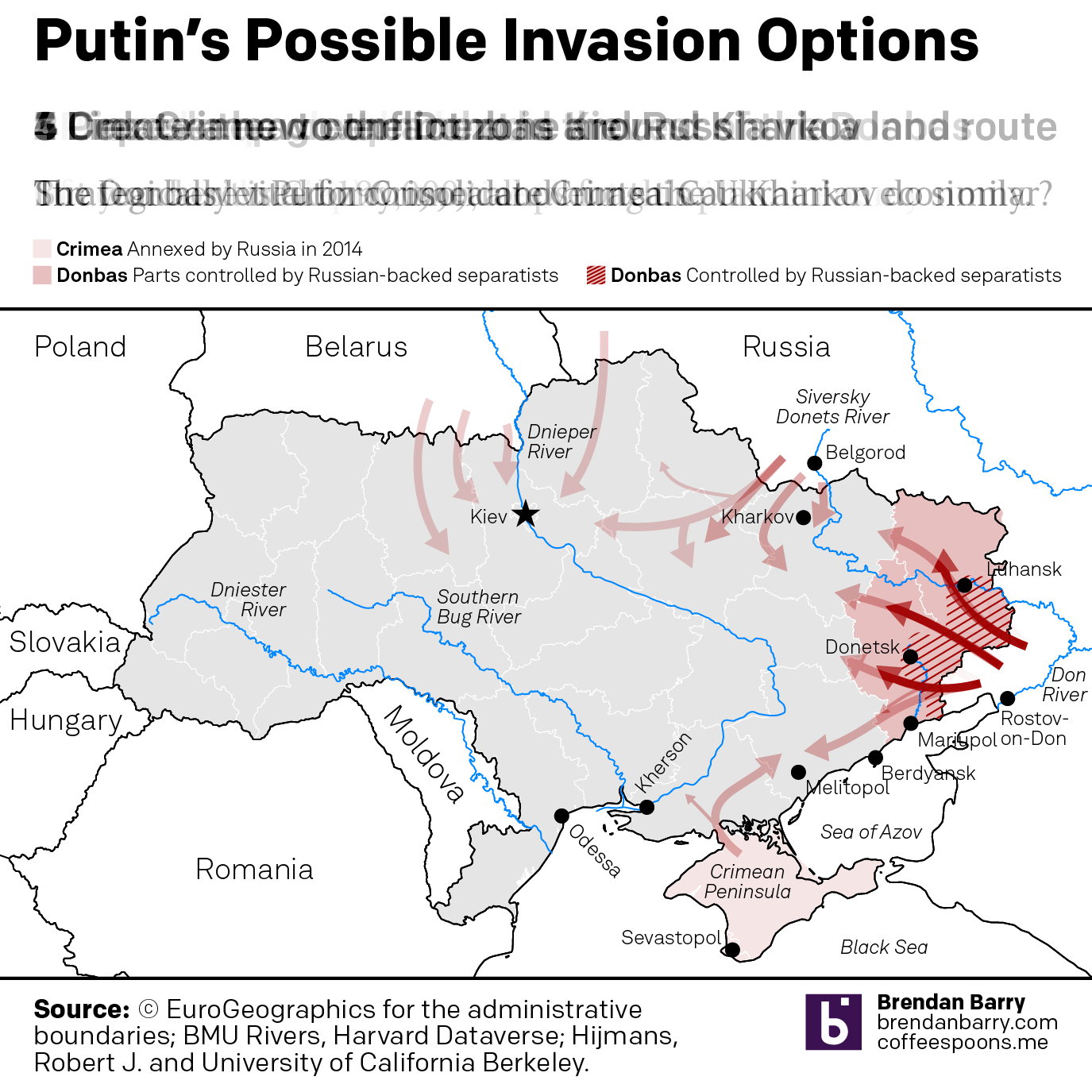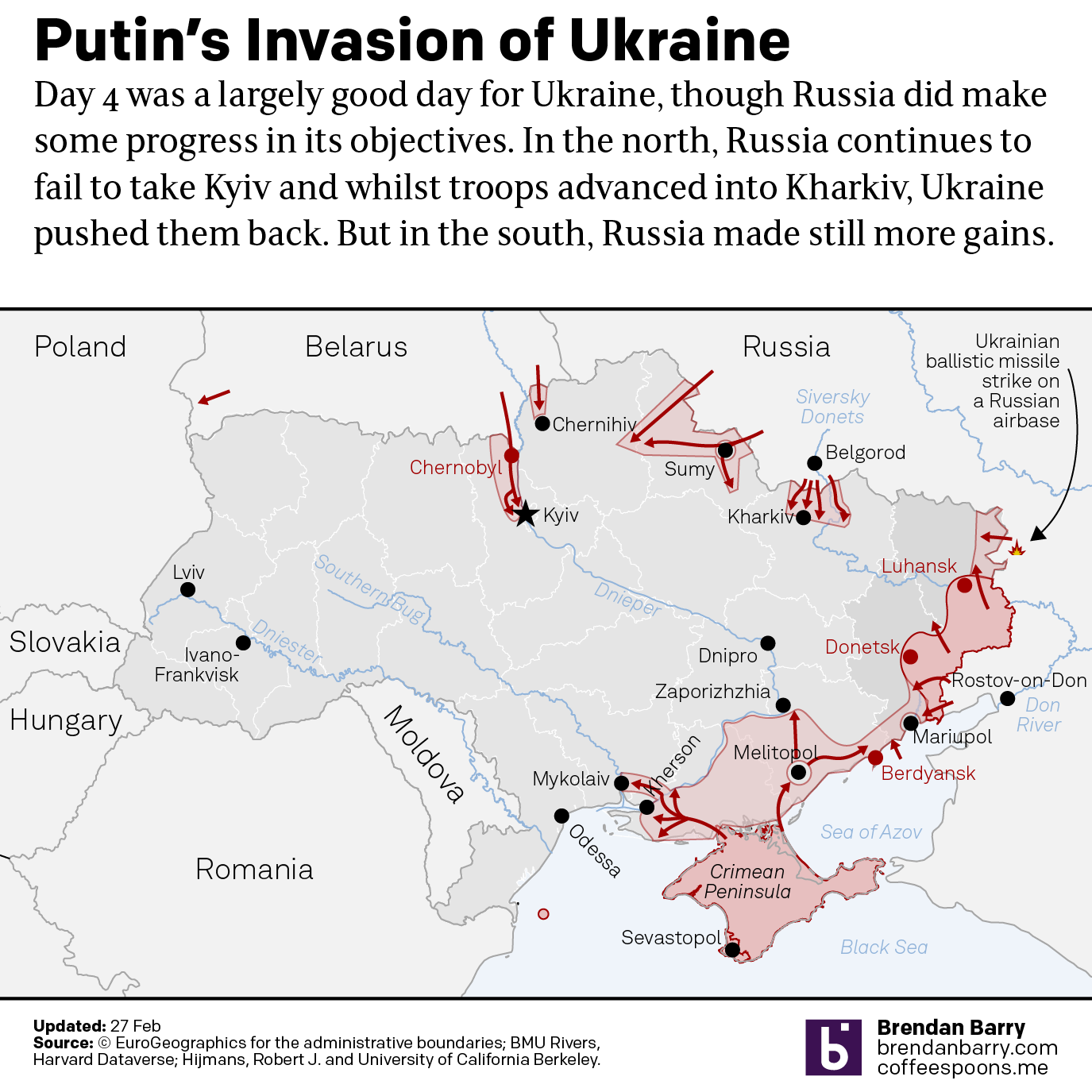Last week I wrote about what I considered Russia’s most likely plans of attack in a war with Ukraine. For the next day I had a post planned about what we could perhaps glean from Russian troop movements in days prior. But, the day I posted the first piece, late that night (US time), Russian forces began their initial artillery and cruise missile barrage. Helicopter assault forces followed as ground troops then began to roll across the border. Suffice it to say, my planned post no longer made sense and I scrapped it.
But we’re now into day five of the war and to start the week I wanted to show where we are at and how my thoughts played out. Unequivocally we are looking at one of the worst case scenarios. That day I wrote:
Finally there is the least likely, a full-out invasion of Ukraine west of the Dnieper River…[this] would likely take many months and occur over multiple phases…But it likely would involve almost all of the above to some degree or another.
If you blend together all the maps from that day, you see this:

You have an invasion from the north, via Belarus, with an objective in Kiev. In the east, a group tries to take the city of Kharkiv whilst a portion also makes a drive towards eastern Kiev. Troops continue to press north and west out of Donetsk and Luhansk into the broader Donbas. And finally troops from the south and Crimea attempt to create a land bridge whilst a small group heads towards Kherson to take the crossings over the Dnieper and protect that group’s flank and rear.
So after four days of warfare in Ukraine—a still very early phase, mind you—where are we?

To be clear, the shapes and arrows here are for illustrative purposes. They are not necessarily the exact routes taken by Russian forces. And the light fill does not mean these areas are not wholly under Russia’s controls. After all, the numerous photos and videos of destroyed Russian supply convoys make it clear Ukrainian troops behind the lines continue to wage effective resistance.
You can see we are looking at one of the worst case scenarios. But, all is not lost because the Ukrainian troops’ organised resistance has stymied much of the Russian advance. Only in the south do you see any real Russian progress in trying to complete a southern corridor or land bridge linking the Russian mainland to Crimea. I don’t think this is the primary goal of Putin’s invasion, that clearly appears to be to take Kyiv and remove Ukrainian president Zelensky. But you can imagine that should Putin realise he’s failed in his main objectives, his ask to withdraw troops from the rest of Ukraine would be to keep the southern corridor. And it’s not like Ukraine would have the troops to necessarily force the Russians out.
But the other thing about this new map is that it’s from yesterday, not today. There would only be a few changes and updates I’d have to make, because not much movement has happened on the ground thus far today. Unfortunately, it looks like Putin is changing tactics, as I and many had feared. With his advances largely halted, he is resorting to a tried-and-true approach: bomb the shit out of everything.
Today we have video of multiple launch rocket system (MLRS) fire raining down upon the densely populated residential areas of Kharkiv. Undoubtedly this will result in dozens if not hundreds of casualties. (Though if we’re lucky, most Ukrainians huddled safely in bomb shelters throughout the barrage.) Kharkiv, like Kyiv, has fiercely resisted the Russian advance. What happens to Kyiv when Putin is able to bring his ground artillery within range?
Sadly, Russian troops continue to advance towards Kyiv, albeit at a crawl and not the blitzkrieg-like pace I think they expected.
Credit for the piece is mine.
